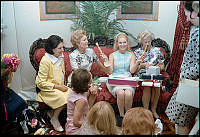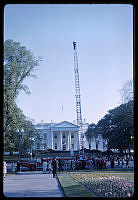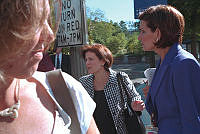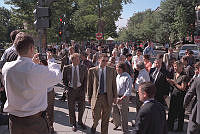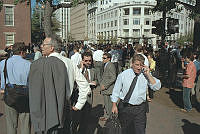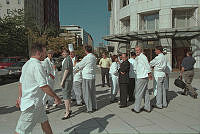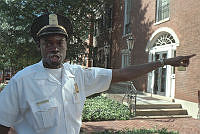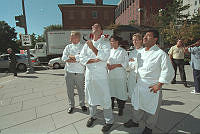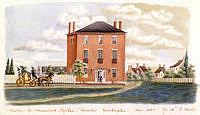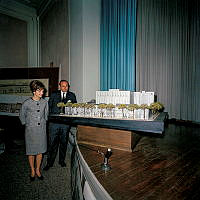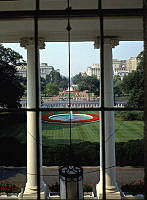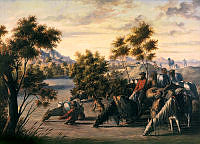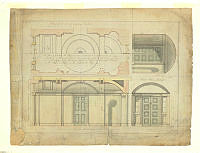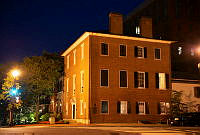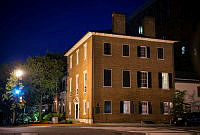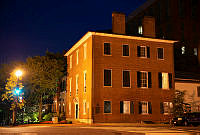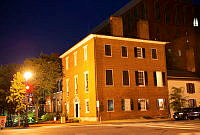Rubenstein Center Scholarship
Emancipation in the President's Neighborhood, 1850
The Story of African American coachman William Williams
On April 16, 2012, we celebrate the 150th anniversary of the District of Columbia Emancipation Act, a day of jubilation for the city of Washington's African American community then as it is today. The document that President Abraham Lincoln signed gave broad legal promise to the capital's enslaved persons. However, new research reveals that prior to this historic occasion there were hard-won freedoms that impacted the White House in more direct ways.
In January 1849, the then-Congressman of Illinois, Abraham Lincoln, suggested compensating District of Columbia slave owners in exchange for freeing their slaves. Congress took up this debate from 1849 to 1850 as part of a larger discussion of various ways to settle sectional disputes over slavery without destroying the Union. These lengthy and contentious debates culminated in the Compromise of 1850, which defused a bitter confrontation between Southern slave states and Northern free states regarding the status of territories acquired during the Mexican-American War (1846–1848).
Abolitionists, hoping to curtail the spread of slavery, chose the new territories of Texas and California that were applying for statehood as their battlegrounds. In March 1850, newly elected New York Senator William Seward delivered his now-famous "Higher Law" speech that denounced slavery on moral grounds and called for emancipation in all the territories, including the District of Columbia. The federal government had jurisdiction over the territories, but not the states.1
In 1850, Congress did ban the slave trade in Washington, D.C., causing some slave owners to move their "property" out of the city. A few slaves ran away fearing they would be sold to southern plantations.
Other individuals took to the press, publishing an anonymous cautionary tale entitled "Effect of Slave Stampede," which was sent from Washington to the New York Express, and soon reprinted in the Baltimore Sun.2 This tale recounted the heart-wrenching story of African American coachman, William Williams and his family. The Williamses were well known to many first families; Williams served as coachman to President James K. Polk, Zachary Taylor, and Millard Fillmore. Early one morning the Baltimore slave dealer, Joseph S. Donovan, arrived at William Williams's home and took away his family. Although Williams had recently purchased his own freedom, his wife, daughters, and grandchildren remained enslaved and had been hired out by their New Orleans owner who now wished they be returned.
President Fillmore gave Williams money to travel to Baltimore to see his family for the last time. Upon his arrival, Williams learned that he could buy his family's freedom for $3,200. Immediately a subscription was drawn up. It stated, "The President, Mr. [Daniel] Webster, Gen. [Winfield] Scott, and a number of Senators, members and citizens have contributed sums from 5 to $50. Mr. [William] Corcoran gave $200 which was the price asked for the aged wife, and made her 'free' at once." Corcoran, the city of Washington's legendary philanthropist also purchased one of Williams's daughters "who had lived in his family for some years." Georgiana Patterson—the widow of a Navy commodore—and Sophia Towson—the widow of an Army general—were also major contributors. All lived on or near Lafayette Square. Col. William Bliss, President Taylor's son-in-law, loaned Williams the last $100 of the $1,500 he still needed to redeem his grandchildren.3
The bill of sale, dated August 13, 1850, between Williams and Donovan gives contradictory evidence. It states that Williams bought five slaves, his wife Dolly, daughter Susan Johnson, and her three children ranging in ages from three to six for $1,850. The bill also lists a second daughter, Maria. Despite these discrepancies in payment amounts and persons freed, William Williams's family was largely held together through the efforts of residents of the president's neighborhood.4
Between November 1843 and December 1852, the slave trader Joseph Donovan organized sixty-five shipments of slaves from Baltimore to New Orleans, carrying a total of 2,113 people. His October 24, 1850 shipment aboard the John C. Calhoun held slave cargo that might have included the Williams family, along with ninety-three other less fortunate persons.5
Read the source article: http://chroniclingamerica.loc.gov/lccn/sn84023200/...













